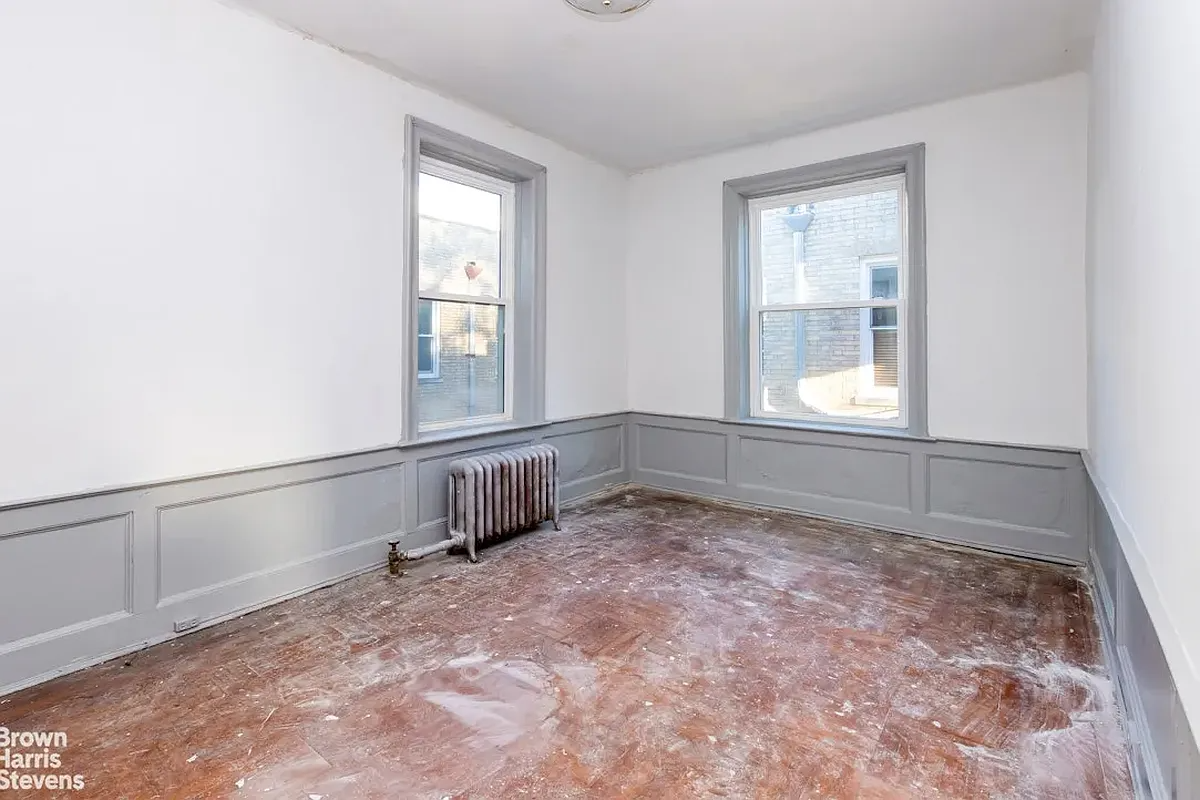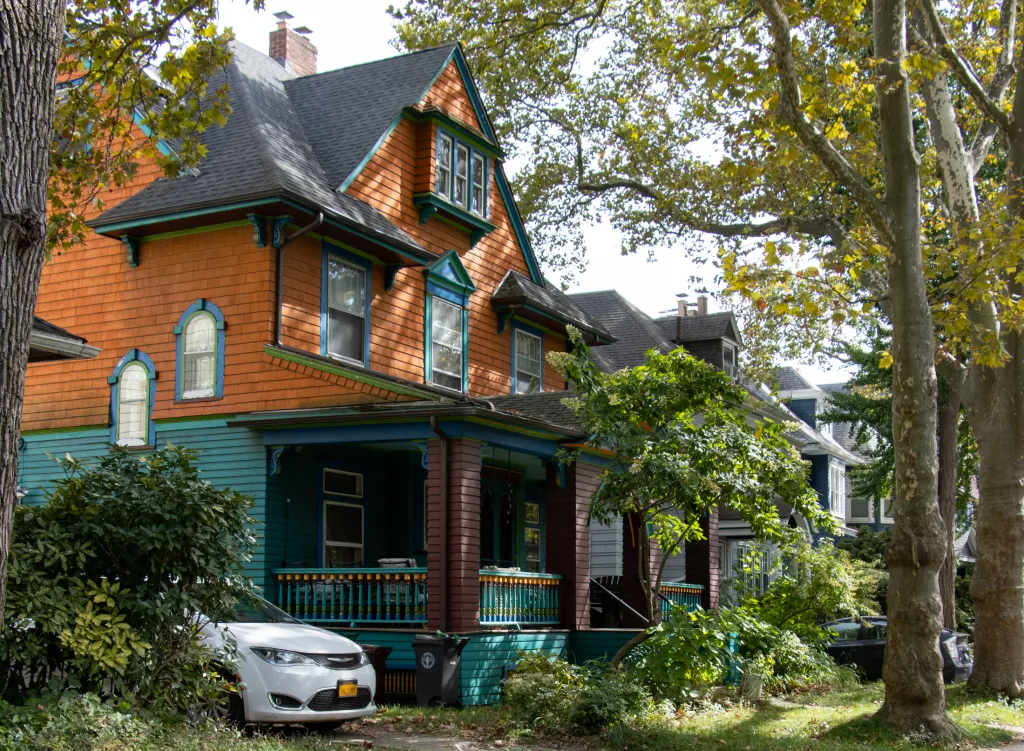'What's Wrong With Gentrification?' Asks New York Mag
This week New York Magazine takes a view on gentrification that is, if not contrarian, at least a little controversial. (The article follows a similar one in the semi-annual magazine n+1). As will come as no surprise to most readers, gentrification these days is treated as something of a dirty word. Why’s that? Mostly because…

 This week New York Magazine takes a view on gentrification that is, if not contrarian, at least a little controversial. (The article follows a similar one in the semi-annual magazine n+1). As will come as no surprise to most readers, gentrification these days is treated as something of a dirty word. Why’s that? Mostly because it conjures up associations of, as n+1 wrote, “the forced displacement of the urban working class by mobile, college-educated professionals.” This may be more myth that fact though: In his recent book There Goes the ‘Hood, Columbia urban planning prof Lance Freeman found that poor residents and those without a college education were actually less likely to move if they resided in gentrifying neighborhoods” and that “the discourse on gentrification has tended to overlook the possibility that some of the neighborhood changes associated with gentrification might be appreciated by the prior residents. In other words, the rehabilitation of an old house or the opening of an upscale bakery isn’t necessarily a zero-sum game in which the long-time residents are lose out. Not only that, claims the New York Magazine article, but gentrification is the only hope that many urban centers have of saving themselves: “The ailing cities that save themselves in the 21st century will do so by following Brooklyn’s blueprint,” the article says in closing. “They’ll gentrify as fast as they can.”
This week New York Magazine takes a view on gentrification that is, if not contrarian, at least a little controversial. (The article follows a similar one in the semi-annual magazine n+1). As will come as no surprise to most readers, gentrification these days is treated as something of a dirty word. Why’s that? Mostly because it conjures up associations of, as n+1 wrote, “the forced displacement of the urban working class by mobile, college-educated professionals.” This may be more myth that fact though: In his recent book There Goes the ‘Hood, Columbia urban planning prof Lance Freeman found that poor residents and those without a college education were actually less likely to move if they resided in gentrifying neighborhoods” and that “the discourse on gentrification has tended to overlook the possibility that some of the neighborhood changes associated with gentrification might be appreciated by the prior residents. In other words, the rehabilitation of an old house or the opening of an upscale bakery isn’t necessarily a zero-sum game in which the long-time residents are lose out. Not only that, claims the New York Magazine article, but gentrification is the only hope that many urban centers have of saving themselves: “The ailing cities that save themselves in the 21st century will do so by following Brooklyn’s blueprint,” the article says in closing. “They’ll gentrify as fast as they can.”
What’s Wrong With Gentrification? [New York Magazine]
Photo by kathyylchan





Rob – Right, because all artists who are “any good” make tons of cash.
I say we put the “planning” back in Urban Planning. There is nothing wrong with using a little artificial help in making sure our renaissancing neighborhoods don’t just evolve into higher beings of pure affluence, but are viable communities that can accommodate a wide spectrum of people, incomes, and lifestyles. I think the programs fsrg mentioned above are necessary tools for healthy cities, not loathsome hinderances to the grand goal of JDB’s perception of Paris.
I have no problem with someone’s MacLaren stroller, or expensive coffee house. Each new group adds what they want to a neighborhood. West Indian restaurants predominate in my neighborhood because they serve the last large influx of newcomers into the neighborhood, a population that is still a majority here. I think we can have both the coffee shop and the roti shop, doubles, as well as double mochas. I would also like equal respect for both, as well as for their customer bases, which cross over much more than people give them both credit for.
rob- youy need to read up on your art history. It’s filled with great artists who only made it big after they died. (Don’t make me kill you) 🙂
woodys….have you been to Woody’s in Philadelphia????
quote:
snark- I was about to say the same thing. Artists get forced out.
i will say one thing, rather tongue in cheekily tho, that if those “artists” were probably any good, they wouldnt get forced out hahah
*rob*
> things that make life in the city interesting for alot of
> folks are sometimes formed in a climate of flux.
I’ll definitely agree with that. If things did not change in this city, how boring would that be? But perhaps I am more of a fan of change than many people.
snark- I was about to say the same thing. Artists get forced out.
As for Williamsburg- it was a huge Polish neighborhood, as well as a mix of Jewish and Hispanic. Back in the 80’s artists were moving there because they could find big, light filled and cheap space. It wasn’t until it was declared “trendy” that it started getting overpriced.
quote:
To argue that cheap bodegas that have been replaced by “foo-foo” markets is a bad thing is wrong on many levels. Studies have been done comparing prices and offerings in those bodegas to supermarkets and “foo-foo” markets which clearly show that the bodegas charge more for food and goods that are older (often past expiration), and often don’t carry healthy options at all. The lack of space in those bodegas also makes buying in bulk impossible which further increases prices. Essentially those bodegas have been ripping off the poor communities that they serve because there are no other options offering quality products to compete with them.
well i dont GO to bodegas for the food. gross. i go for the ammenities that are important to me. newports and cheap 40s and the occasional mega millions lotto ticket! when those kinds of stores all disappear and froofroo places take their places it’s furstration!
*rob*
“I’m not sure what your argument is supposed to be, because in every instance, the artists are all forced out of a given area.”
Ditmasnark
I guess what I’m saying is that an argument can be made that those things that make life in the city interesting for alot of folks are sometimes formed in a climate of flux.
Artists and Musicians are often in search of a place and a time and a movement.
In the case of gentrification by price-outs, that movement is pretty much guaranteed. Not always a good thing, but it seems to be borne out by example.
Brooklyn may very well be reaching a “strangling” point but larger economic forces may abate that as would good planning and policy.